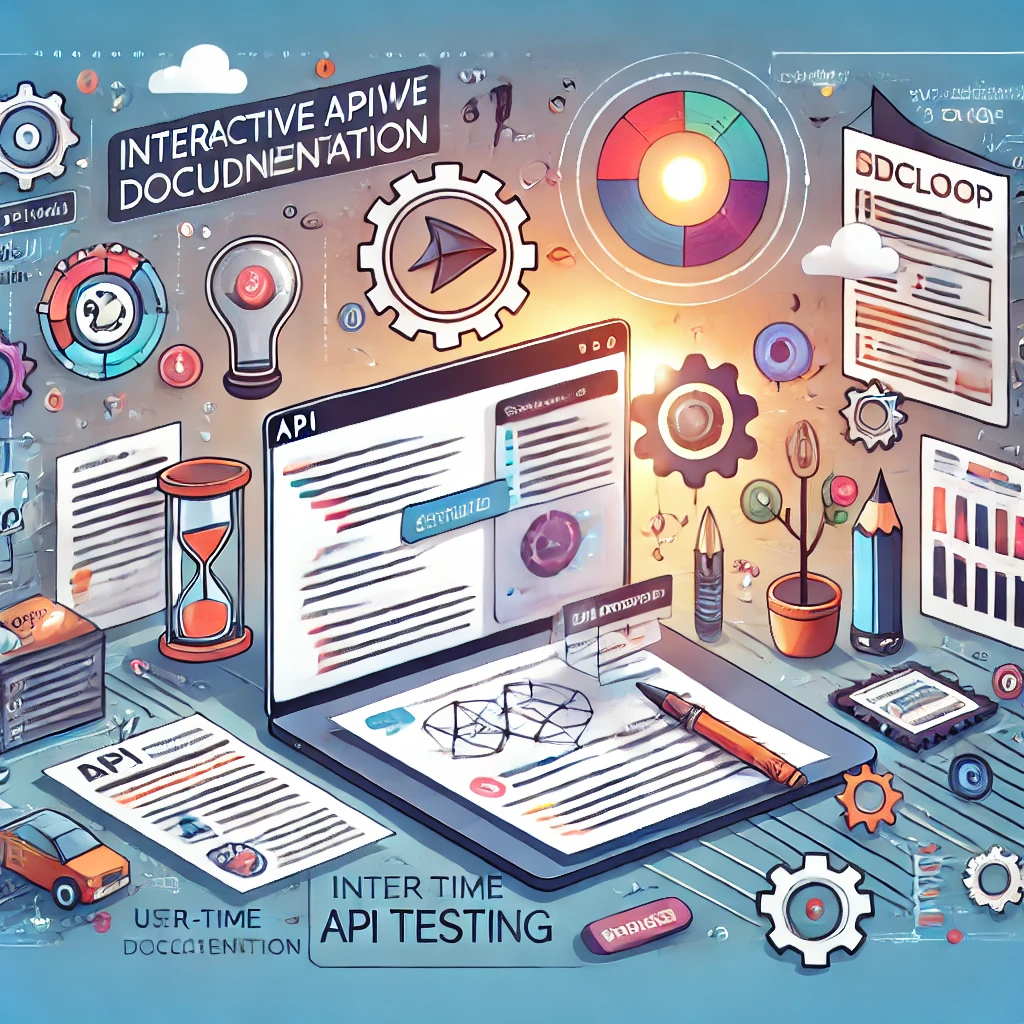Designing Interactive API Documentation with Syncloop

Syncloop, a powerful API development platform, simplifies the creation of interactive API documentation, making it easier for teams to communicate API capabilities and reduce integration time. In this blog, we explore how Syncloop enables interactive documentation, its features, and best practices for crafting user-friendly API guides.
The Importance of Interactive API Documentation
Interactive API documentation offers several advantages over traditional static guides:
- Improved Developer Experience: Interactive tools help developers understand and test APIs quickly.
- Reduced Support Effort: Clear, actionable documentation minimizes the need for support queries.
- Faster Integration: Real-time testing capabilities accelerate the development process.
- Increased Adoption: Well-designed documentation attracts more developers to use your APIs.
How Syncloop Enables Interactive API Documentation
Syncloop provides a suite of features and tools that make it easy to design interactive API documentation:
1. Built-In Documentation Generator
Syncloop automatically generates API documentation based on your endpoint definitions, ensuring consistency and accuracy.
2. Interactive Try-It-Out Feature
Developers can test API endpoints directly within the documentation. Syncloop provides an intuitive interface for executing requests and viewing responses in real time.
3. Dynamic Data Visualization
Syncloop supports dynamic rendering of request and response data, enabling developers to visualize how the API interacts with data structures.
4. Authentication Simulation
The platform integrates authentication mechanisms such as OAuth 2.0 and API keys into the documentation, allowing developers to simulate authenticated calls.
5. Customizable Styling
With Syncloop, you can customize the look and feel of your API documentation to align with your brand identity.
6. Versioned Documentation
Syncloop supports versioned documentation, enabling developers to explore multiple API versions seamlessly.
7. Code Snippets
The platform generates code snippets for various programming languages (e.g., Python, JavaScript, Java), simplifying implementation for developers.
Benefits of Using Syncloop for API Documentation
1. Enhanced Developer Engagement
Interactive tools make it easier for developers to learn and integrate your APIs, improving satisfaction and adoption.
2. Improved Accuracy
Syncloop automatically syncs documentation with API definitions, reducing errors and outdated content.
3. Faster Troubleshooting
Real-time testing capabilities enable developers to identify and resolve issues without leaving the documentation interface.
4. Scalability
As your API evolves, Syncloop ensures documentation remains up-to-date and accessible for all versions.
5. Reduced Onboarding Time
Clear and interactive documentation accelerates onboarding for new developers and partners.
Real-World Applications of Syncloop’s Interactive Documentation
1. SaaS Platforms
SaaS providers use Syncloop to document APIs for integrations, enabling third-party developers to extend platform functionality.
2. E-Commerce Marketplaces
Interactive documentation helps e-commerce platforms showcase APIs for inventory management, payment processing, and customer data integration.
3. Fintech Solutions
Banks and fintech companies use Syncloop to document APIs for payment gateways, transaction tracking, and account management.
4. IoT Systems
Syncloop’s interactive tools document APIs for device communication, enabling IoT developers to build applications quickly.
Best Practices for Designing Interactive API Documentation
- Provide Clear Descriptions: Include detailed explanations for each endpoint, parameter, and response code.
- Enable Live Testing: Use Syncloop’s try-it-out feature to let developers test endpoints directly within the documentation.
- Include Code Examples: Provide code snippets in multiple languages to simplify integration for diverse developer audiences.
- Implement Authentication Guides: Document authentication workflows and include examples for generating tokens.
- Organize Content Logically: Group endpoints by functionality and include an easy-to-navigate table of contents.
- Maintain Consistency: Use Syncloop’s automated documentation tools to keep your content aligned with API updates.
Conclusion
Interactive API documentation is essential for delivering a superior developer experience, and Syncloop makes it easy to create engaging, accurate, and functional guides. With features like live testing, code snippets, and dynamic data visualization, Syncloop empowers teams to showcase their APIs effectively and drive adoption.
Whether you’re documenting APIs for SaaS platforms, fintech solutions, or IoT systems, Syncloop provides the tools to streamline the process and enhance developer satisfaction. Embrace Syncloop to create documentation that stands out and accelerates API integration.
A user-friendly API documentation interface with interactive features, including live endpoint testing, dynamic data visualization, and code snippets, powered by Syncloop.
Back to Blogs